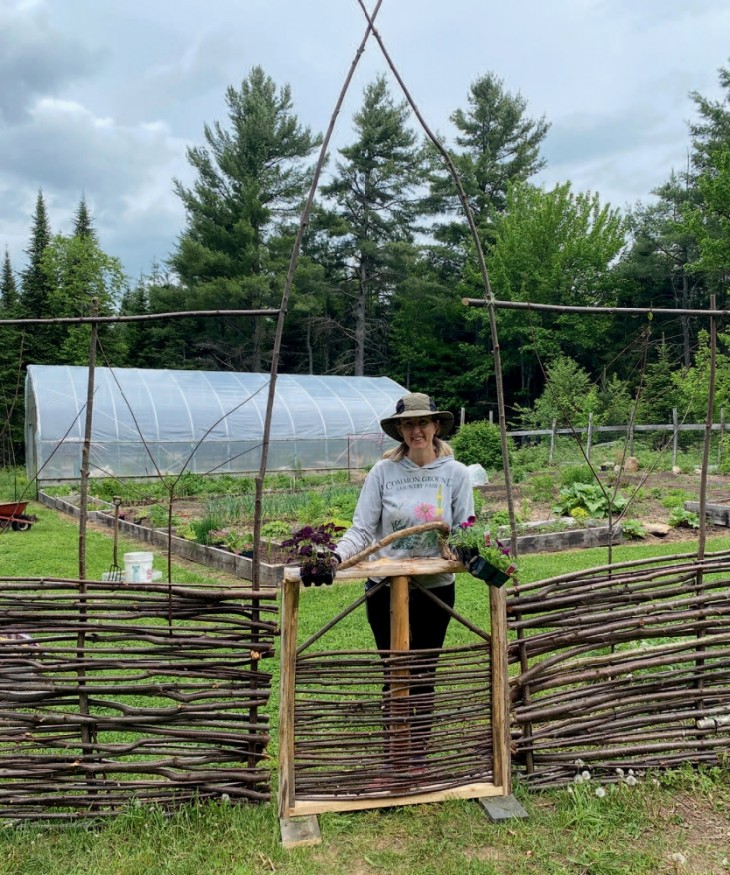I tend to think of our woodlot as a private Home Depot, each stand its own aisle. The species and successional stage dictate both the wood’s future use and harvest schedule: a stand of diseased beech earmarked for firewood, stout white pine for milling, white cedar for fence posts, and old apple trees for cider making. One section of the woodlot, a log landing that regenerated as a monoculture of 1-inchdiameter pin cherry, seemed short on utilitarian value – until our garden was invaded by deer. We needed a tight fence and needed it fast. Remembering the woven wattle fences I had seen throughout Europe, I set to work improving on a traditional lattice design.
Wattle fences can be constructed as standalone woven panels (known as hurdles) or a more permanent setup where thin posts (staves) are driven into the ground and then woven horizontally with flexible saplings (known as withies). To add longevity to the fence, I opted for 4-foot, light-grade metal T-posts driven into the ground at 3-foot intervals. To maintain a rustic aesthetic and to extend the height to keep critters out, I screwed 8-foot vertical saplings into the channel of the T-posts.
Weaving is simple but time consuming and requires a large supply of green saplings (850 for this 200-foot project). Start by cutting the saplings; remove all the lateral branches, but keep the saplings as long as possible. Alternate each course front/back off the first post, and push each layer of withies down as you go to keep the fence tight. As with a handwoven basket, each row will add rigidity, and alternating your weave will apply equal pressure, so the stave stays upright. Screwing the withies into the holes in the T-posts will also add strength. Continue weaving withies until you’ve reached your desired height.
Because our fence is meant to keep out a variety of critters from hares to deer, we added cross-braces along the top with rows of monofilament fishing line and branches filling the upper gap. We used floral wire to attach both the top braces and filler branches. For the gate we opted for a light, standalone hurdle gate that matches the fence.
The wattle fence effectively keeps the critters out of the garden, and it blends well with the surrounding landscape. The average life expectancy of a wattle fence in the Northeast is about 10 years. As one wattle fence maker told me, when it’s time to rebuild, the old fence will make a very nice pile of kindling!





